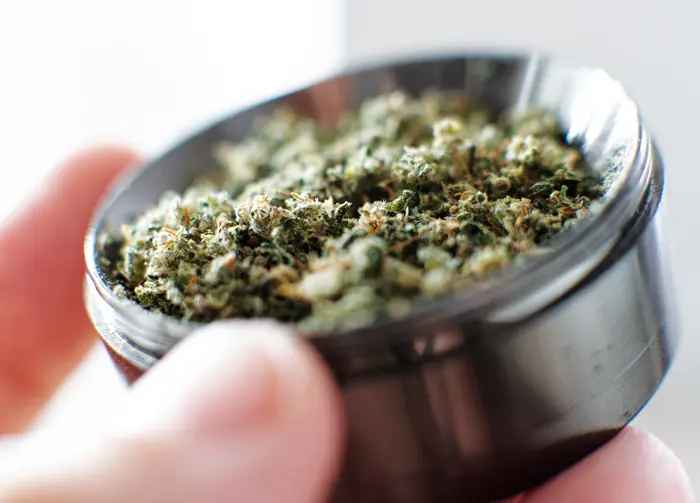My sister had been smoking pot since she was 13. She’s in her forties now. Quitting was a lot harder than she thought it would be. It took some time–and a number of tries to leave it fully behind, but she did it. Now she’s reaping the benefits – as are her relationships, work, and family.
There’s a reason people smoke dope.
And that reason is pretty much the same as why people do other drugs: because it makes you feel better when you’re using it.
Enter Mary Jane
Having a bad day? A quick hit of the vape. Boring day? A quick toke. Friend or colleague, you got to see? It’ll be easier – and maybe even kind of fun – if you’re just a bit stoned.
The thing is, though, that when you’re high from marijuana, as when you’re high from other drugs, you’re not living a full and present life. You’re not living and experiencing the world in its real and unfiltered form. Your experiences are distorted, blunted, and different.
The good and bad, the ups and downs, successes and challenges of the moments, situations, days, and months of life are not totally “real.” And when you’re high on Mary Jane, you’re definitely not able to relate authentically to others.
Also, as you’ll read below, there are some serious and definitive physical and mental effects from smoking pot that need to be understood.
But…
…it’s legal in some states, right? Yes, in many states, marijuana is either fully legal or legal for medicinal purposes and decriminalized. It’s fully legal in New Jersey, meaning it can be bought and used by adults for medicinal or recreational purposes. It’s confusing. How can marijuana be a “drug,” or something “bad” for you, or even something you could get addicted to, if it’s legal?
Let’s start with what it is: What is Marijuana?
Marijuana, or Mary Jane, comes from one of two Indian hemp plants: the Cannabis sativa plant and the Cannabis indica plant. The “flower” of the plants, also known as the “bud,” contains the highest level of THC (tetrahydrocannabinol), which is the mind-altering chemical that causes intoxication. The dried leaves, flowers, stems, and seeds from the plants also contain THC, but to a much lesser degree, and all of the combined components of the plant are known as “marijuana,” which can be smoked or ingested.
Name-wise, in addition to “marijuana” and “cannabis,” commonly used names are “weed,” “Mary Jane,” “dope,” “grass,” “reefer,” “ganja,” and many others.
Okay, now let’s hit the facts about marijuana:
Even though cannabis has been approved by the FDA for use in some medical conditions, the jury is still out on the benefits vs. risks. One thing we know for sure though is that there’s not enough information on long-term effects of people using it for either age- or health-related concerns. We also know that the type of marijuana used for medical purposes is of a particular make-up, not just the average stuff that’s readily available in legal dispensaries or that you might buy or get from a friend or a friend of a friend.
Marijuana can absolutely cause a mental dependency, which is why chronic usage is now called a “marijuana use disorder.” And it can definitively take the form of addiction. Matter of fact, the most current research suggests that 30% of people using marijuana may have some degree of marijuana use disorder. Cannabis use disorder develops in about 10% of regular users and in up to 50% of chronic daily users. And if you start using before the age of 18, you are 4-7x more likely to develop such a disorder as an adult. You can read more here about its addictive qualities – as well as how the potency of marijuana has significantly increased over the years and why that matters.
Marijuana has serious effects on the brain – both short- and long-term. In the short term, while the user might also feel “high” or happy for a few hours, they also lose their sense of time and place, and their spatial and distance functions are impaired. This is why some states now apply a “DUI” not just to alcohol, but to weed as well.
Long-term, regular use is also associated with cognitive impairment (regular use potentially causes an IQ drop of up to 8 points!), poor school and work performance, mood disorders, and even psychosis. Click here for a more in-depth analysis of its clinical manifestations.
Using marijuana at an early age increases the risk for mental illness. Which would make sense, right? Young brains are still developing – and infusing those young brains with THC can definitely throw off their normal growth. People who use marijuana before the age of 12 are twice as likely – double! – to develop a mental illness than those who don’t use until they’re over 18.
And the frequency matters too. Research shows that 14-15 year old girls who used marijuana every day were 5x more likely to suffer from depression when they reach their early 20’s. There’s also a significant increase in the reporting of depression and anxiety in young women who use daily – and 13% of young users become dependent on it. More stats here.
So…the bottom line there are real risks to using marijuana:
Yes, marijuana is considered a drug that can cause a substance use disorder. Yes, there are negative and destructive physical and mental effects of using weed. Also, the earlier someone starts, the more damaging it is to their brain. And the longer one uses, the harder it is to stop (yes, that’s the same with all substance use).
As my sister will attest, marijuana use can negatively affect your life, your work, your education, your relationships – as well as your goals and your dreams.
And also as my sister will attest, you can stop. And start living a more full and present life.
Click here for an overview of the real risks of using marijuana.





